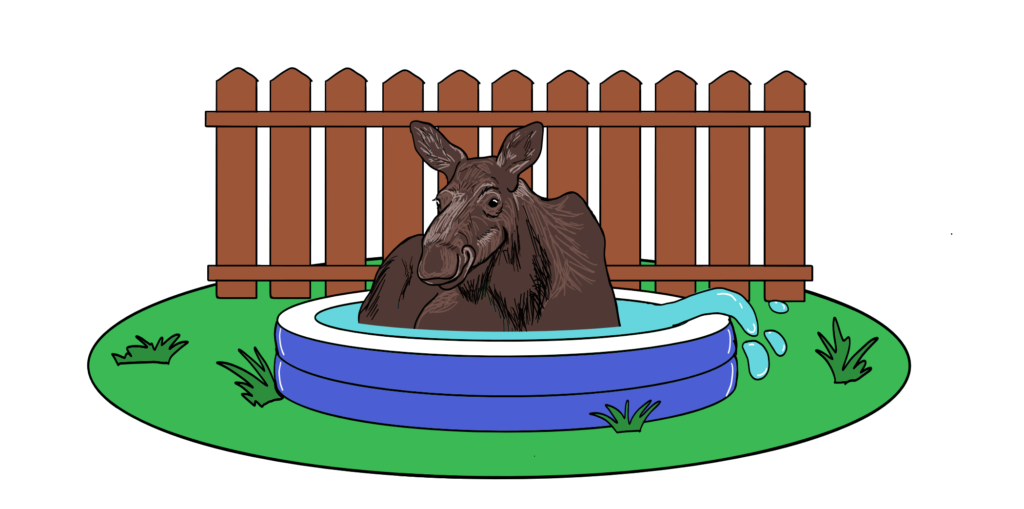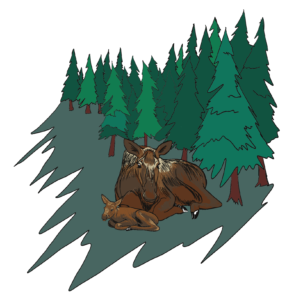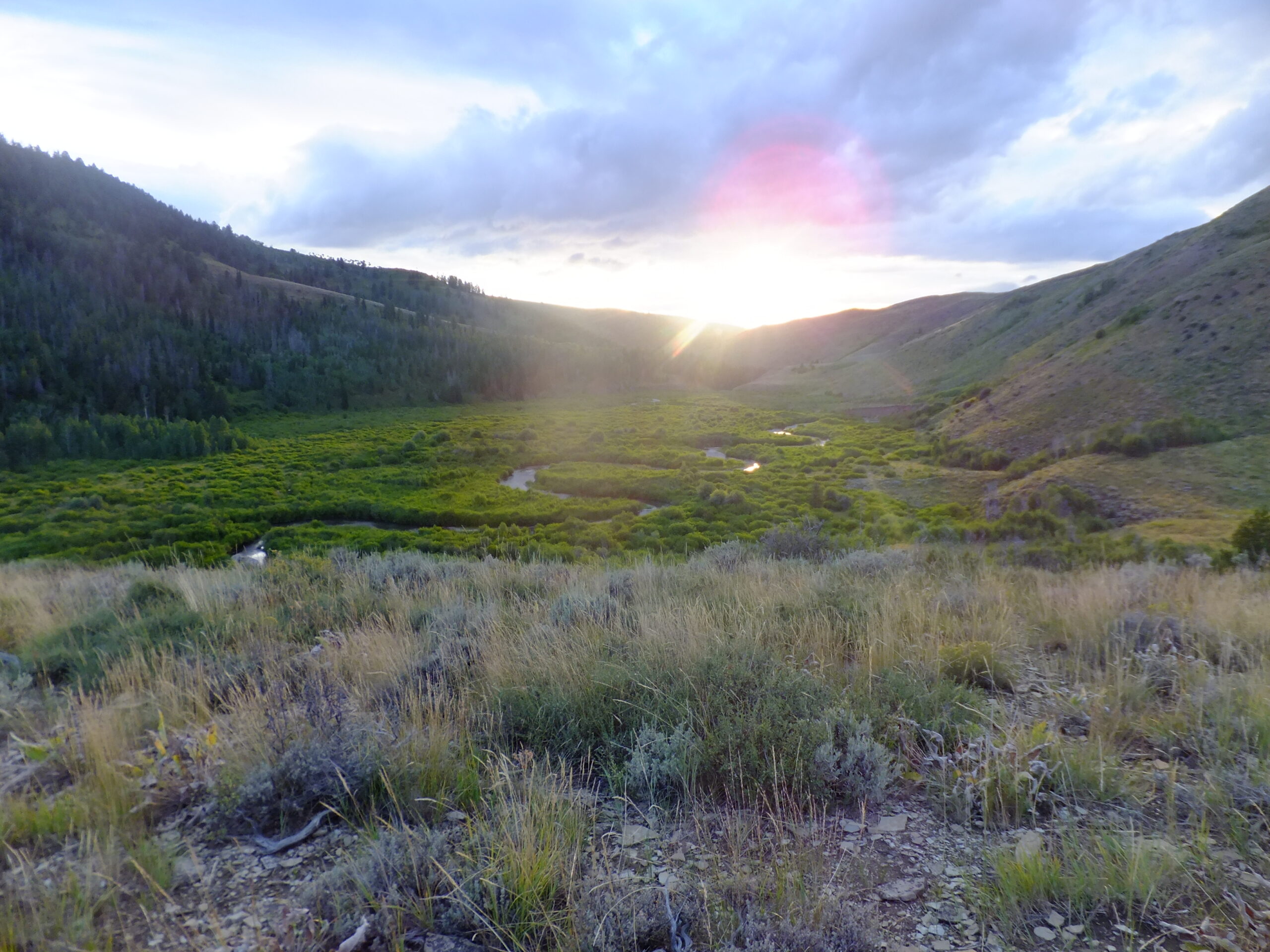Imagine you live in Key West, Florida, where summer temperatures can climb as high as 95 degrees Fahrenheit and the humidity index can be near 80 percent. Picture yourself sitting on the beach enjoying an ocean view, but you begin to sweat as the sun rises overhead. If you continue to sweat and get too hot, what would you do to cool off? You could either take a dip in the ocean or move indoors to sit in front of an air conditioner.
Now, picture yourself in the middle of Yellowstone National Park, Wyoming, where you are happily observing a cow moose and her calf lying at the base of a cluster of pine trees. It is a beautiful summer day, and you can’t help but wonder why they are not munching on the nearby lush green grass and recently emerged willows.
They are probably doing their best to stay cool.

Moose are large, dark, and cannot sweat—this means they are sensitive to overheating. Without many physiological mechanisms to cool them down, moose turn to their behavior.
Moose behaviorally thermoregulate and change their behaviors during the summer months to deal with the changing temperatures throughout the day. Often, moose will select habitats that are near water or those that provide them with ample shade, especially during the peak of a warm day. These spots that offer respite from the sun and heat are called thermal refuges. On particularly hot days, moose will spend anywhere from 3 to 16 hours in these thermal refuges. Although this behavior helps to keep moose cool, it prevents them from being able to forage for the astonishing 40-60 pounds of vegetation per day needed to fuel their large bodies.
Although getting hot is somewhat inevitable, some ungulates take extra steps to make sure they don’t get too warm in the first place. The white-lipped peccary is a small, pig-like ungulate found in a wide range of habitats around the world. Although they are better-suited for warmer climates than moose, the white-lipped peccaries substantially reduce their activity levels when temperatures get above 86 degrees Fahrenheit. By laying low, peccaries avoid working up a sweat in the first place. The Arabian oryx in the blazing-hot deserts of Saudi Arabia will switch from being most active at during the day to doing their activities at night during the hottest part of the year. Examples of behavioral thermoregulation can show up in different ways, and they can be found in animals across the globe!
Unfortunately, climates are changing, and moose and other heat-sensitive animals are becoming increasingly susceptible to overheating. There are some steps that each lover of wildlife can do to minimize the heat stress that animals may experience. First, when visiting a park or having any sort of encounter with a moose, keep your distance. A moose lying down in the shade is probably trying to limit its exposure to the heat of the sun. If you get too close, it will likely get up and find another cool spot to lie down. In moving, it is exposing itself to the sun which will warm its body – something that it is trying to avoid. Additionally, by not moving too much during the heat of the day, it is conserving calories that it cannot easily replace due to limited browsing time.

Another thing that we as humans can do is minimize human-made barriers such as fences and roads, especially in areas along streams, ponds, and forested areas where suitable moose habitat exists. This idea is scientifically known as landscape connectivity, and it describes how easily an animal can navigate from one area of suitable habitat to another. Although moose can navigate some of these human-made structures, doing so adds additional energetic demands that are already stretched thin by the increased number of hours spent trying to stay cool. As humans continue to seek out the rugged and isolated areas that moose call home, their habitat will become increasingly fragmented. In the peak of the summer, this fragmentation can drain more and more of a moose’s energy assets and further the heat stress that they experience.
Behavioral thermoregulation is something that humans have in common with animals from all over the world. However, the ability to behaviorally adapt to a warming climate is becoming increasingly important for heat-sensitive animals that cannot escape the heat by walking into an air-conditioned building. So, remember to keep your distance and allow them to continue to stay cool and conserve the energy resources they have managed to collect.

